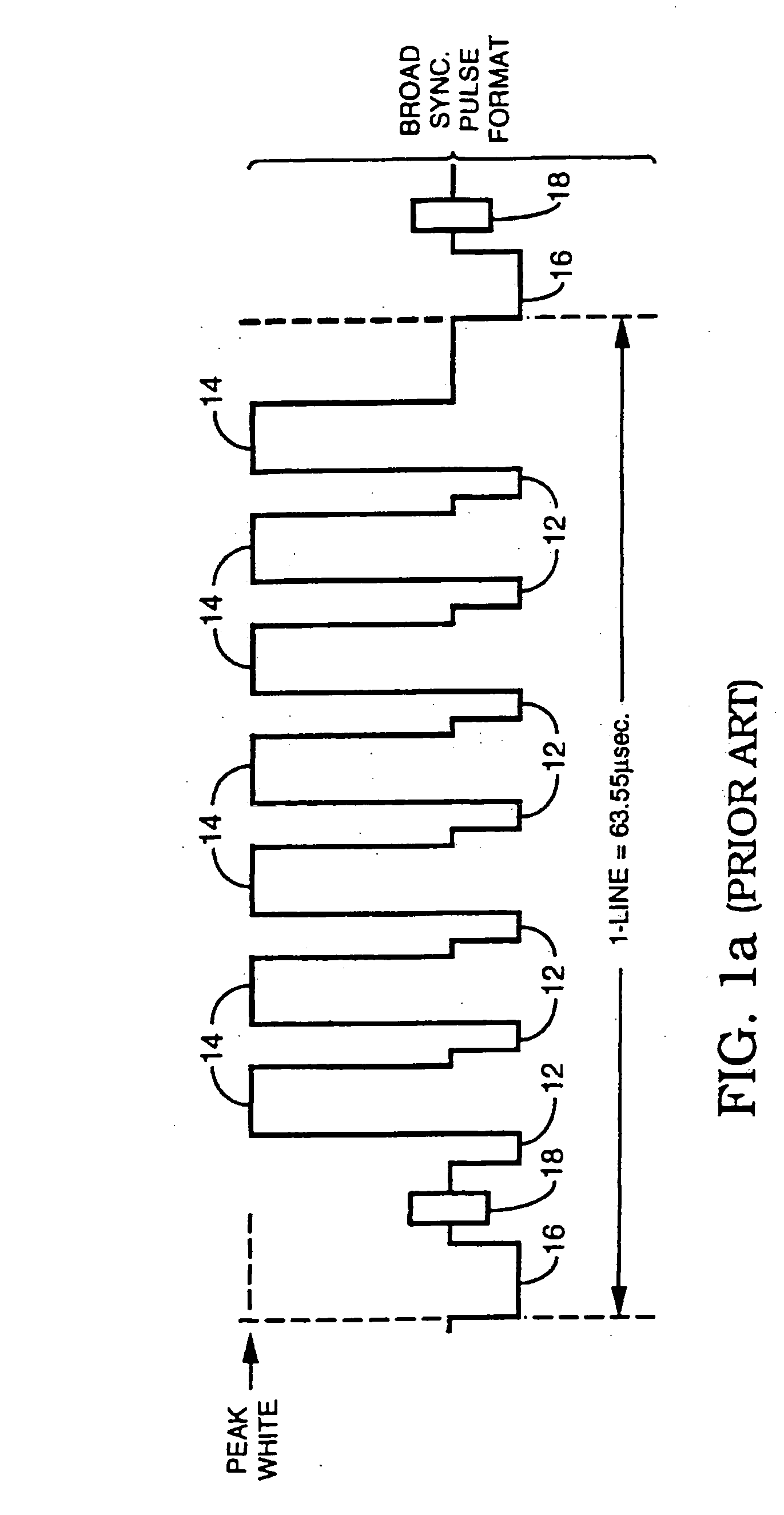Method and apparatus to synthesize and defeat video copy protection signals
a technology of video copy protection and video synthesizer, which is applied in the field of video copy protection signal synthesizer and defeating video copy protection signal, can solve the problems of low contrast to synchronizing problems, video programs that are not recordable suffer from artifacts, and produce a recording lacking entertainment value, etc., and achieves the effect of defeating copy protection signal
- Summary
- Abstract
- Description
- Claims
- Application Information
AI Technical Summary
Benefits of technology
Problems solved by technology
Method used
Image
Examples
Embodiment Construction
[0034] As previously discussed, FIGS. 1a and 1b illustrate prior art copy protection and copy protection defeating signals, respectively.
[0035]FIG. 2 illustrates various waveforms corresponding to ways that AGC pulses can be delayed to provide the copy protection defeating technique of the invention. First, the waveform D in FIG. 2 illustrates the AGC pulse and pseudo sync pulse at the normal position previously shown in FIG. 1a which causes copy protection. Waveforms A to C show various delays or gaps between the trailing edge of pseudo sync pulse and the leading edge of the respective AGC pulse. Waveforms A and B are effective in turning off the copy protection signal while waveform C causes partial reduction or turn off of the copy protection signal. For effective defeat of the copy protection signal it follows that waveforms A and B are preferable.
[0036] For a new copy protection signal that is dynamically varied from on to off, one technique of the invention starts for exampl...
PUM
 Login to View More
Login to View More Abstract
Description
Claims
Application Information
 Login to View More
Login to View More - R&D
- Intellectual Property
- Life Sciences
- Materials
- Tech Scout
- Unparalleled Data Quality
- Higher Quality Content
- 60% Fewer Hallucinations
Browse by: Latest US Patents, China's latest patents, Technical Efficacy Thesaurus, Application Domain, Technology Topic, Popular Technical Reports.
© 2025 PatSnap. All rights reserved.Legal|Privacy policy|Modern Slavery Act Transparency Statement|Sitemap|About US| Contact US: help@patsnap.com



